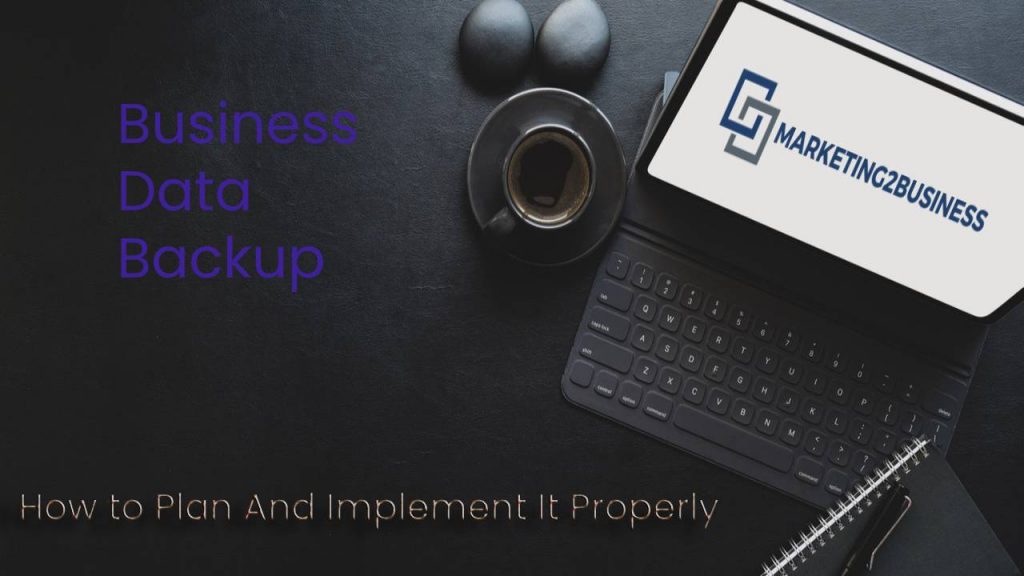Have you ever thought of how huge are the volumes of information your business produces and operates on a daily basis? Starting from tens of new contacts joining the list of potentially convertible customers, or piles of important emails you receive from your business partners and collaborators — ending with voluminous reports, various archives and client databases being constantly updated with new pieces.

Now, what if, say, a third of this information is deleted in the event of an accident, like a severe power surge, system failure, malware activity, or unanticipated hard disk breakdown? How will that affect your workflow? And how much would it cost to rebuild all the missing files?
The bitter truth is that most business owners realize the value of all this data only when laborious and time-consuming reconstruction is needed to get everything back — which may mean weeks or months of downtime to one’s business, or even its collapse, as seen from recent studies:
- 70% of small firms go out of business within a year of a large data loss incident
- 94% of companies that experience severe data loss do not recover
- 51% of these companies close within two years afterward
- 43% of companies do not reopen again after massive data loss
All of which is mentioned to emphasize one simple, yet incredibly important thing: proper measures of data loss prevention are crucial for every business, regardless of its size or type.
Table of Contents
Best Business Data Backup Practices
All backup routines must combine expense and effort to provide the best result against the risk of data loss. Ahead, you’ll find some rules of thumb that surely help you to develop a robust, well-thought backup strategy to retain access to your data — no matter when or what disaster may take place. Moreover, there comes a time where your organization cannot handle storing and protecting all of this sensitive information – which is when your business needs to consider investing in data center operations or services.
-
Measure Your Backup Needs
Most likely, you will come up with the idea of backing up literally all your data and creative assets; sounds great, but reality proves it to be hardly feasible due to huge costs and complexity of realization.
So in the first place define a set of realistic objectives for your company. Assess amount of data you’d like to backup, and make sure it meets the budget you can afford to spend on its accomplishment. Make decisions based on which data would be the most difficult to recover, and which is most essential to your organization’s workflow.
-
Think Beyond Your Office Computers
Of course, first and foremost you’ll back up all the important data that is stored on your work computers. But what information may be kept on your staff members’ laptops or smartphones? Is your website data on the backup list? And what about the files your organization keeps in the cloud storages?
Also, is there any vital data you currently have in hard copies only? Such, for example, as contracts, leases, government forms and financial information may be very difficult to reproduce, so make sure to protect that information by duplicating it electronically — either scanned, or computer-generated.
-
Pick Up A Right Backup Media
Depending on required capacity and considering natural disaster probabilities in the area your business is located, choose a backup media that would best match your needs:
Online Backup Services. Storing data in the cloud is increasingly popular option for its multiple advantages, such as customizability, convenience of use, and reduction of maintenance costs — while some cloud service platforms also offer automation of workflow processes. But it comes with drawbacks. For example, restoring data after an accident greatly depends on the speed of your Internet.
Physical media. Utilizing of physical data media require implies that you will purchase and maintain the copies yourself, which can be quite expensive. On the flip side, it takes less time to recover data compared to the cloud.
On-premises storage. This method typically offers the fastest restoration times. However, it can be susceptible to natural catastrophes if you keep backups in the same place, in addition to what you’ll need to take upon yourself the costs of maintaining it.
All in all, your choice should be based on two aspects: what kind of data you need to store and how much of it.
-
Create A Schedule for Data Recovery
After purchasing the appropriate hardware and media, next in your your backup strategy is setting a thorough media rotation schedule, which will cover the decent number of data loss contingencies by helping you ensure information recoverability over time. Remember: It’s impossible to recover data that was lost yesterday when your backup tape is three months old — or when a defective media has never been tested. So check your backups before you need them: regularly check the backup logs and run scheduled test restores to make sure the copies are safe and sound.
To Sum Up
Creating a robust backup plan is crucial for any business, and is one of the most important components of its success. Also, it is vital to have in sight a reputable data recovery company that you could resort to in case you become unable to access your information. We recommend you Salvagedata — a team of dedicated, highly-qualified technicians. More than 10 years of experience is the reason they hold the rate of successfully resolved cases at 96%, and aren’t afraid to accept the most complicated cases of data loss.

